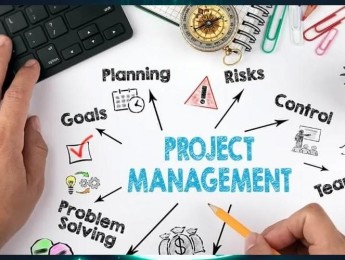Change management protocols within an HR department are crucial for ensuring smooth transitions during organisational changes. These protocols establish systematic approaches to anticipate, plan, and implement changes effectively, minimising disruptions and maximising employee engagement and productivity.
By implementing change management protocols, HR departments can proactively address potential resistance to change, facilitate communication channels, and support employees throughout the transition process.
These protocols also enable HR professionals to assess the impact of changes on the workforce, identify potential risks, and develop mitigation strategies accordingly. Change management fosters a culture of adaptability, resilience, and continuous improvement, which is essential for the organisation's long-term success and sustainability.
Upon completion of this course, participants will be able to:
- Explain the role of Human Resources (HR) in facilitating change management processes.
- Demonstrate how collaboration between business units and HR can enhance the likelihood of successful outcomes.
- Understand the diverse functions HR can undertake and their relevance in different organisational contexts.
- Assess the suitability of these HR roles within the specific framework of your organisation.
- Develop a strategic plan outlining key steps and objectives for future change initiatives.
- Use checklists and available resources to implement change initiatives efficiently and effectively.
This course is designed for anyone responsible for sponsoring or managing new processes within the HR department. It would be most beneficial for:
- HR Professionals
- HR Business Partners
- Change Management Professionals
- Project Managers
- Communications Managers
- HR Contributors
- Directors
- Business Owners
- Operational Managers
- People Managers
This course uses a variety of adult learning styles to aid full understanding and comprehension. Participants will review real-world case studies to understand the potential future of HR. They will then work through cases where positive change has occurred and compare it to less successful rollouts.
They will watch trainer-led presentations to understand the key areas of importance within a change strategy and critically evaluate their HR protocols to understand where change should begin.
Day 5 of each course is reserved for a Q&A session, which may occur off-site. For 10-day courses, this also applies to day 10
Section 1: What’s Required for HR Change?
- Organisational restructuring and its impact on HR.
- Employment law updates and compliance requirements.
- Implementing diversity and inclusion initiatives in HR practices.
- Technology integration in HR systems for efficiency and data management.
- Change management strategies for HR professionals.
- Employee engagement and retention strategies during times of change.
- Leadership development for HR managers in driving organisational change.
- Effective communication strategies for HR professionals during change processes.
- Talent acquisition and succession planning in times of organisational change.
- Ethical considerations in HR decision-making during change initiatives.
Section 2: Designing Your Change Initiatives
- Understanding the principles of change management.
- Assessing organisational readiness for change.
- Developing a change management plan.
- Stakeholder analysis and engagement strategies.
- Communication strategies for change initiatives.
- Building a change-ready organisational culture.
- Implementing change sustainably.
- Monitoring and evaluating change initiatives.
- Addressing resistance to change.
- Leading change effectively as a manager or team leader.
Section 3: Effective Project Management for Change
- Creating project plans and timelines.
- Resource allocation and budgeting for change projects.
- Risk management strategies in change projects.
- Stakeholder engagement and communication in project management.
- Monitoring and tracking progress in change projects.
- Problem-solving and decision-making in project management for change.
- Change control processes and scope creep.
- Evaluating and learning from project outcomes for continuous improvement.
Section 4: Working with Other Areas of the Business
- Building partnerships and alliances across different areas of the business.
- Integrating HR initiatives with other business functions.
- Collaborative decision-making processes across departments.
- Aligning goals and objectives across different areas of the business.
- Managing conflicts and resolving disputes between departments.
- Leveraging technology for interdepartmental collaboration.
- Building a culture of collaboration and teamwork across the organisation.
Section 5: Building a Strategic Communication Plan
- Identifying target audiences and tailoring messages accordingly.
- Developing key messages and storytelling techniques.
- Choosing appropriate communication channels and platforms.
- Crafting a compelling brand narrative and consistent messaging.
- Implementing an integrated communication strategy across various channels.
- Establishing metrics and KPIs to measure the effectiveness of communication efforts.
Section 6: Utilising Your Workforce in the Change Environment
- Implementing change management frameworks.
- Building resilience and adaptability in the workplace.
- Leveraging diversity and inclusion during times of change.
- Managing resistance to change.
- Fostering a culture of continuous improvement.
- Utilising technology to facilitate change.
Section 7: Evaluating the Change
- Key performance indicators for assessing change initiatives.
- Analysing the impact of change on stakeholders.
- Evaluating the effectiveness of change communication strategies.
- Measuring employee engagement and satisfaction in the context of change.
- Assessing the financial implications of change.
- Conducting post-implementation reviews and lessons learned analysis.
- Incorporating feedback loops for continuous improvement in change processes.
Upon successful completion of this training course, delegates will be awarded a Holistique Training Certificate of Completion. For those who attend and complete the online training course, a Holistique Training e-Certificate will be provided.
Holistique Training Certificates are accredited by the British Assessment Council (BAC) and The CPD Certification Service (CPD), and are certified under ISO 9001, ISO 21001, and ISO 29993 standards.
CPD credits for this course are granted by our Certificates and will be reflected on the Holistique Training Certificate of Completion. In accordance with the standards of The CPD Certification Service, one CPD credit is awarded per hour of course attendance. A maximum of 50 CPD credits can be claimed for any single course we currently offer.
- Course Code PO4-118
- Course Format Classroom, Online,
- Duration 5 days














